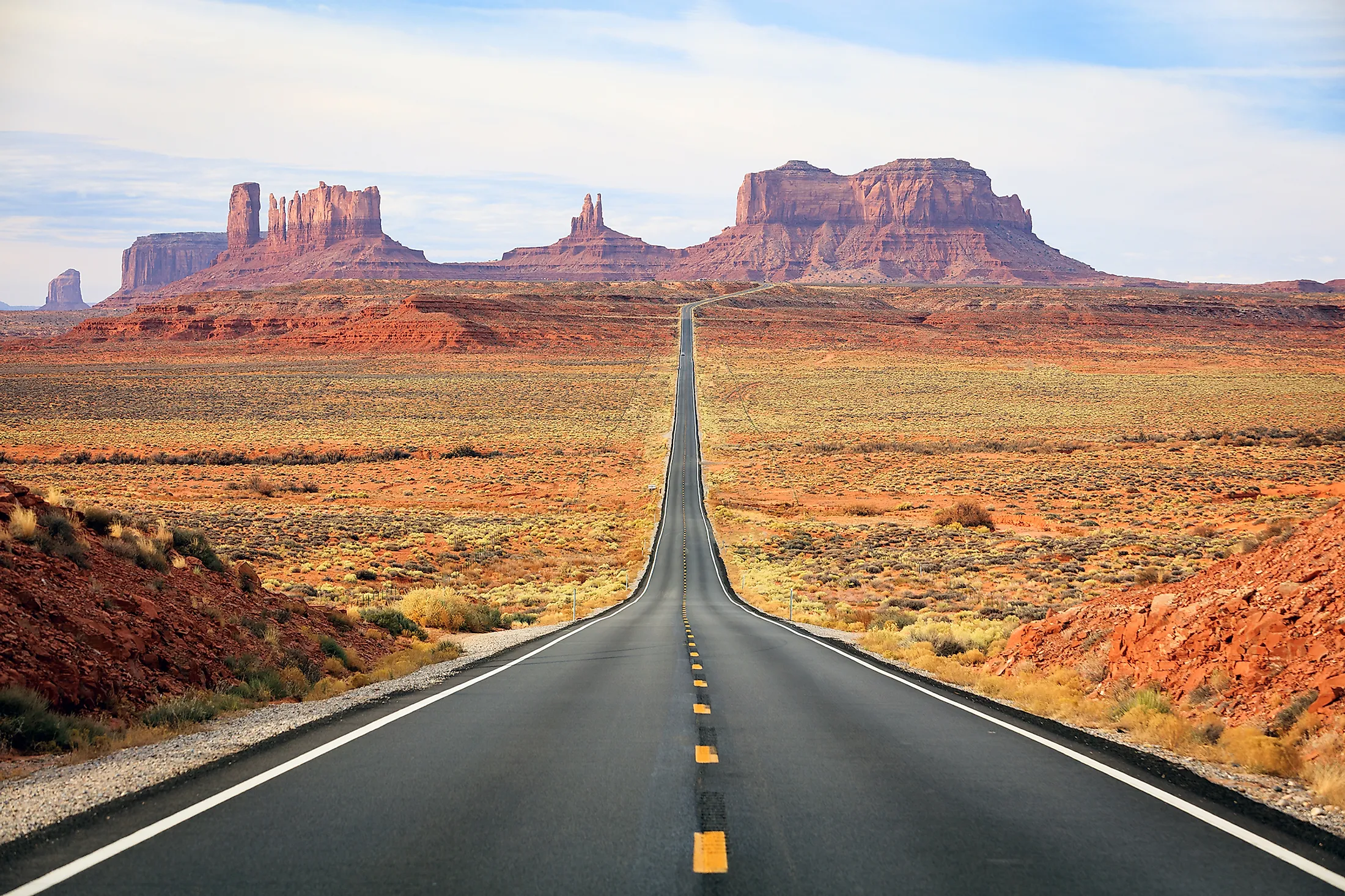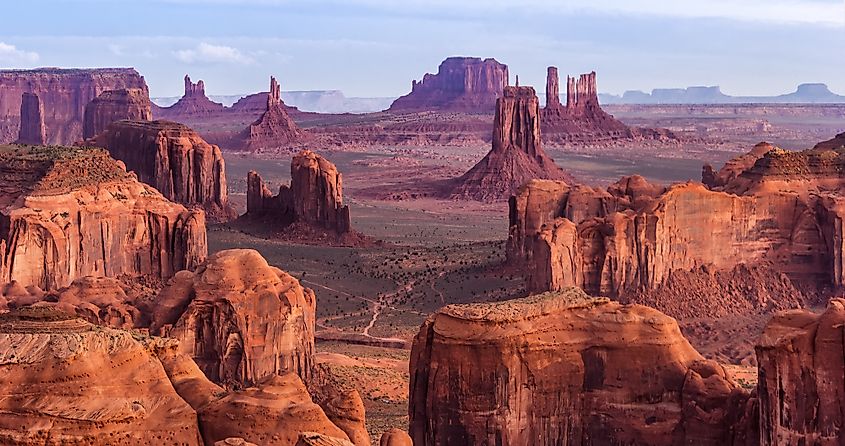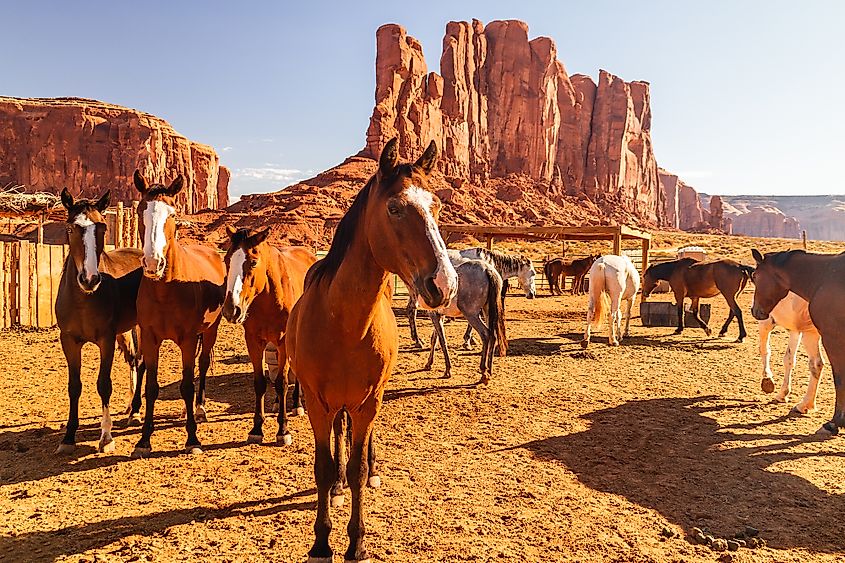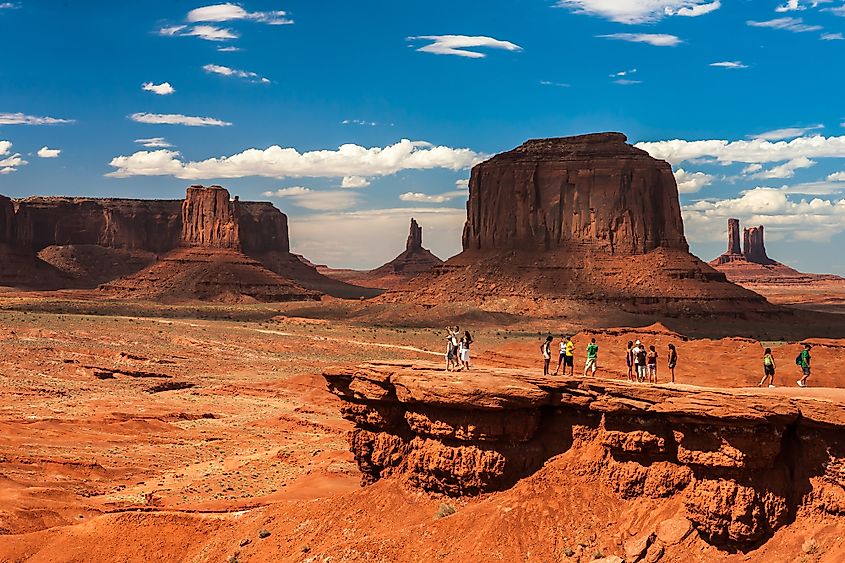
Monument Valley
Monument Valley is a valley located in Navajo Tribal Park, across the border of the U.S. states of Arizona and Utah. The Valley features massive rock formations, including hills, cliffs, and buttes. Monument Valley is considered one of the grandest and most photographed attractions globally, exhibiting sandstone masterpieces that reach 1,000 feet in height.
Topography And Climate Of Monument Valley

Monument Valley covers a total land area of 12.32 sq miles, with floor elevation between 5,000 and 6,000 feet above sea level. The Valley is characterized by massive sandstone buttes, with the largest towering 1,000 feet above the valley floor and grounds dominated by dry sagebrush. The Valley's buttes are visibly defined with three principal layers, the lowest is The Organ Rock Shale, the middle layer is De Chelly Sandstone, and the highest layer is the Moenkopi Formation topped by Shinarump Conglomerate.
Monument Valley's climate is hot and dry in the summer, with temperatures ranging between 31 to 34 °C. Winters are cold to freezing. The best time to visit Monument Valley is when temperatures are comfortable during the spring and autumn seasons.
Brief History Of Monument Valley
As per geologists' predictions, Monument Valley was formed during the Permian Period as part of a seafloor where residues and sandstone stacked up in layers for millions of years, followed by a series of nature's constructive and damaging activities that happened among the red rock structures and the sandstone towers.
The first recognized humans of the area were the Anasazi Indians, who settled here in 1200 B.C. and sketched pictographs that are still observable today. Later on, Explorers from Mexico and Spain arrived in the 1700s to discover the area and control Navajo invaders, one of the biggest American Indian tribes. In the early 1860s, Kit Carson, supported by Utes, attacked Navajos who escaped to Navajo Mountain and returned to the Valley in 1868. Today, The Monument Valley is home to the Navajo Nation, so it is not officially a national park, as it is operated by the Navajo Parks & Recreation Department.
Habitat And Biodiversity Of The Monument Valley

Unlike the nearby Canyonlands in Utah and the Grand Canyon in Arizona, the Monument Valley is one of the six Navajo-owned tribal parks and is still inhabited by Navajos, who are estimated to be between 30 to 100 residents- depending on the season- staying in houses without any infrastructure like water or electricity.
The wildlife in Monument Valley is very minimal, unlike other Colorado Plateau parks nearby. The presence of Navajo tribes who live in this area, with their dogs and sheep, leads to less habitat and discourages the existence of wildlife.
Monument Valley hosts the famous purple sage plant of western lore. Due to the extreme dryness and absence of humidity, only a few trees exist in the Valley, like juniper that show up around the edges of the Valley. However, cliffrose, rabbitbrush, and snakewood can survive when moisture is present.
Top Attractions In Monument Valley

Monument Valley is preserved as a tourism attraction by Navajo Nation Parks & Recreation. Visitors are encouraged to drive a 17-mile dirt ring or set off on the only public hike in the Valley, an easy 3-mile round trail that leads the visitors to Mitten Butte, which is considered a landmark of the American West. Visitors can also tour up-close views of olden cliff houses and natural arcs in remote locations.
Despite the area being isolated with limited services, small towns such as Dennehotso and Kayenta feature eateries and convenience stores that sell road trip supplies. A hotel offers lodging options that display stunning views of the Valley. Moreover, camping and R.V. options in the Valley allow tourists to fully frame themselves with magnificent rock structures and experience a unique sunrise and sunset.











